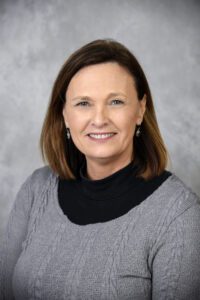Central Florida Institutions Working Hard Today to Prepare the Nurses of Tomorrow
by TIM CRAIG
If the COVID pandemic has brought awareness to anything, it has highlighted the importance of nurses and other healthcare workers and the roles they play in keeping society running in a healthy, efficient, and safe manner.
The pandemic did take a toll on the healthcare workforce, though. According to reports, 1 in 5 healthcare workers have left the profession since 2020, and some estimates indicate that up to 500,000 nurses will leave by the end of 2022.
While this may sound alarming, it is not entirely unexpected. Even before the pandemic, a looming nurse shortage hung over the healthcare industry. A report from the American Association of Colleges of Nursing notes two studies from 2010 — including one that said the industry was projected to continue to fall short of anticipated needed increases of baccalaureate-prepared nurses.
While an aging population and increased need for nursing faculty to train students further exacerbate the challenge, Central Florida’s educational institutions are ramping up efforts to meet the challenges head-on.
Polk State College President Angela Garcia Falconetti says she and the other Florida College System Council of Presidents have developed a five-part solution to address the nursing shortage. That solution focuses on faculty recruitment and retention, patient simulation facilities, clinicals, articulation, and public-private partnerships.
“Polk State College and the Florida College System are well positioned to provide a long-term solution to filling the systemic gap in nurses,” she says. “We continue to produce highly skilled nursing professionals, illustrated by a licensure examination pass rate that far exceeds state and national averages.”
Some staffing challenges are already being mitigated. According to a 2022 report by the American Association of Colleges of Nursing, there was a 3.3 percent increase in enrollment in entry-level Bachelor of Science in Nursing in 2021.
“Different colleges of nursing are being creative and innovative in adequately recruiting prospective nursing students to enroll and feel supported in nursing programs,” says Dr. Angelica C. Hernandez, an assistant nursing professor at AdventHealth University. “Preparing a new generation of entry-level bachelor nursing degree students to become safe, efficient and effective entry-level registered nurses is crucial to ensure patient safety.”


Dr. Joan Connors, the Interim Director of Nursing at Polk State College, is also seeing an uptick in interest in her program.
“Students desire a program of excellence, and the Polk State Nursing Department continues to graduate nurses prepared for the rigors of the profession, and ready to meet the demands in the community,” Connors says. “Nursing is among the most respected careers, and nurses are positioned to change lives every day. In 2020, nurses were labeled heroes and, in my mind, they continue to fulfill that capacity.”
Attracting more students to programs is one part of the solution, but once students get in, faculty and staff must be prepared to help the students tackle the rigor, reach for excellence, and understand the evolving sociological and technological opportunities the industry has to offer.
That’s why Dr. Pal Good, professor of nursing at Polk State College, says that introducing students to different specialties of nursing is particularly important.
“Having nurses such as flight nurses, nurse practitioners, and operating room nurses come to visit schools — or have students visit those areas of the hospital [is important],” she says.
“Nursing education is becoming infiltrated with technology, as are the clinical practice settings. Nursing students must be taught to think critically. Patients are in the hospital because they need nursing care. Nurses are not handmaidens and do not spend time waiting for a doctor to tell them what to do — nurses collaborate with many other professionals and are independent thinkers.”
Technology isn’t just something to learn out in the field, either, says Polk State professor Danielle Delgiudice.
“We are having to think outside the box – this generation of students is more tech-savvy and is not interested in listening to us lecture and read our PowerPoints,” she says. “Finding ways to get them more involved and engaged is necessary. I also believe that the teacher-student relationship is crucial. The more face-to-face time spent with each student, the better the connection with the teacher. That connection seems to fuel a more engaged learner.”
While connection and engagement are vital to student success, opportunity must also be at the forefront.
Janice Lowden-Stokely, a professor and Coordinator of Nursing Research and Student Success at AdventHealth University, says there is an opportunity to build a workforce that matches the population they serve and secure a bright future for the profession.


“One area that interests me is the importance of increasing the diversity of the nursing workforce to better mirror the increase in the diversity of the population,” she says. “It is necessary to make plans to develop ways to encourage grade school, middle school, and high school students of underrepresented populations to pursue a career in nursing.”
“Nurses need to be prepared to care for a complex patient population and nursing education must adapt to changes in health care and educate the nursing student to be able to deal with the realities of health care today.”
